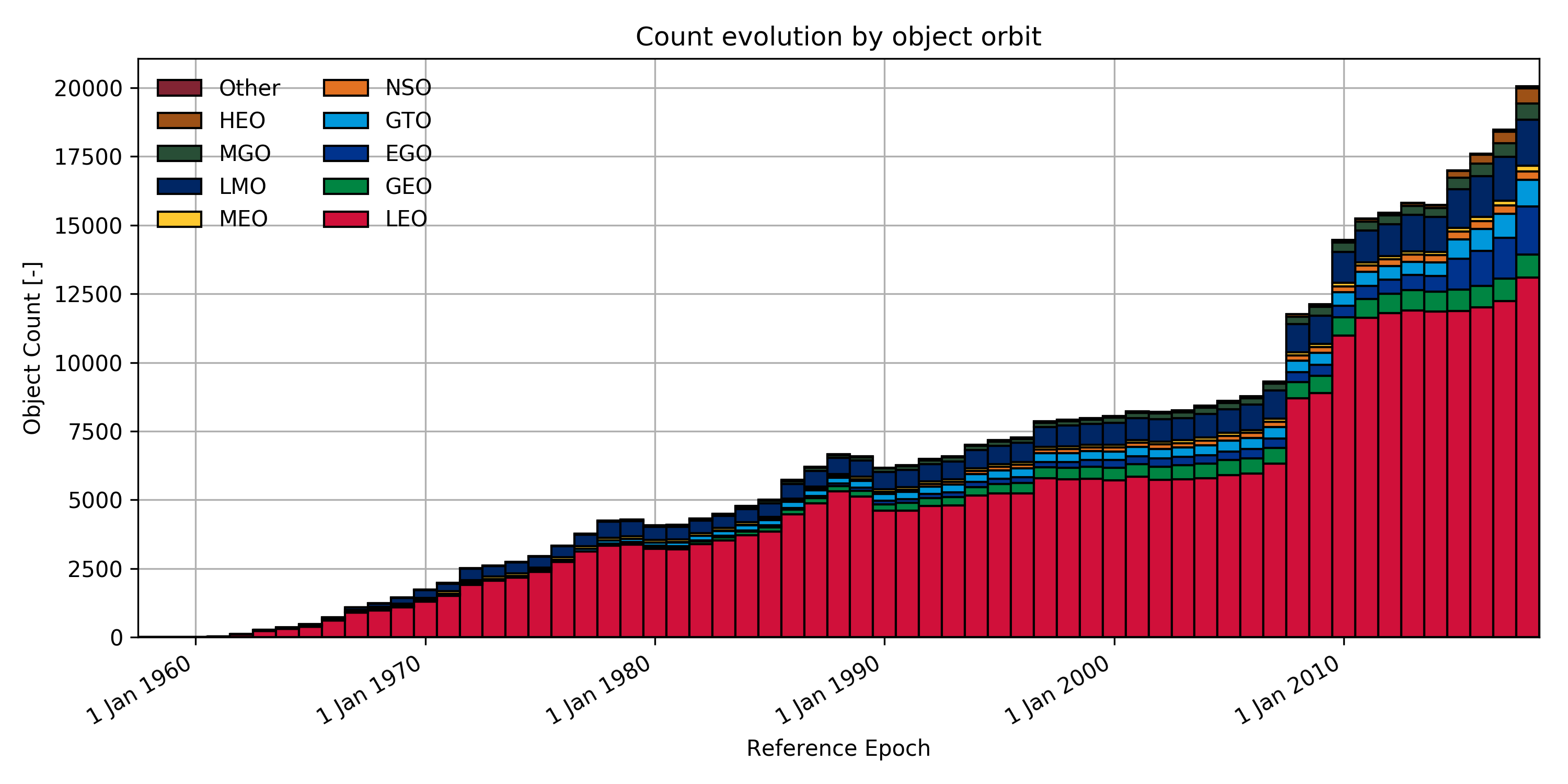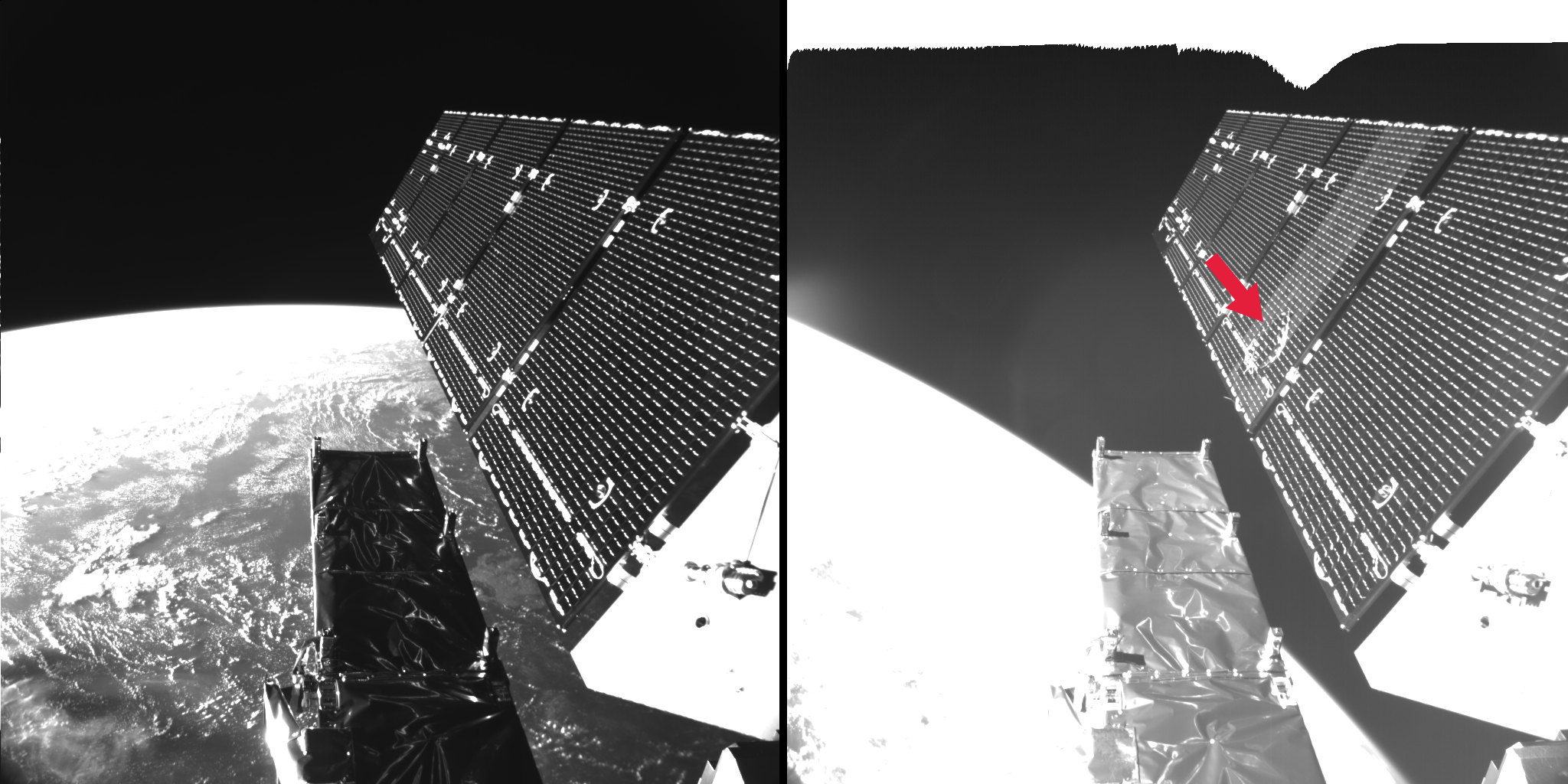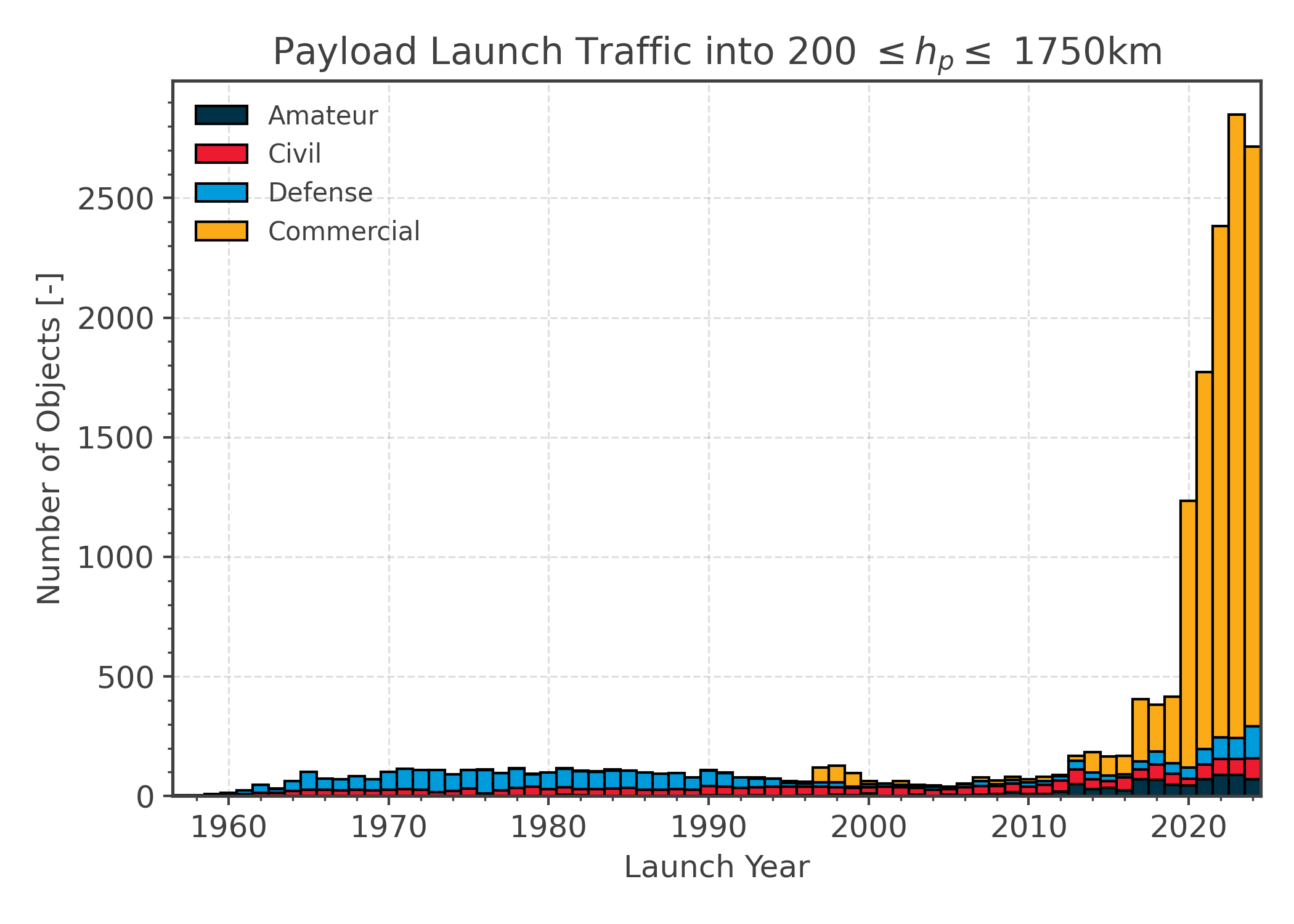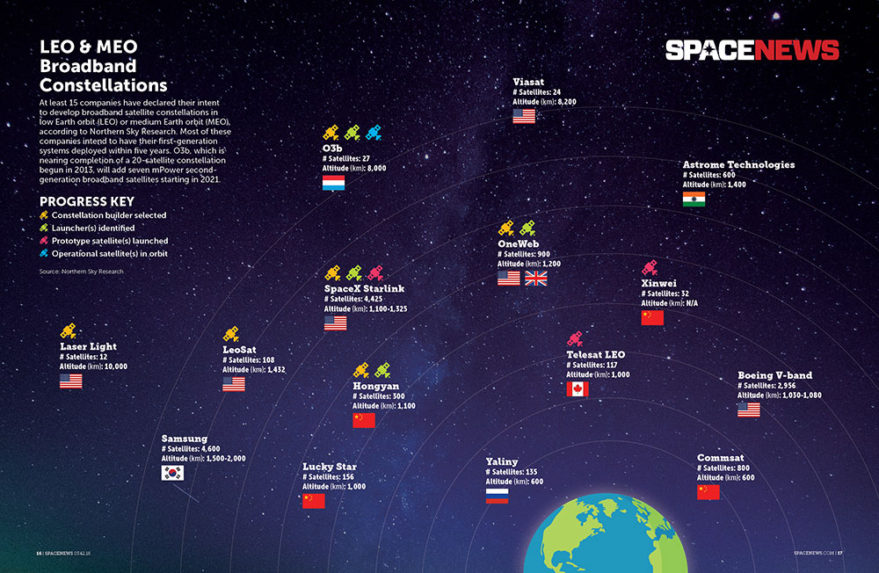Advanced Machine Learning and Computational Techniques for Space Traffic Management
Contents
- Introduction
- When Do We Need Collision Avoidance?
- How Should We Perform a Collision Avoidance Manoeuvre?
- How Can Artificial Intelligence Help?
- Useful Resources
- References
Introduction
- Why do we need collision avoidance?
- How can advanced Machine Learning and Computational Techniques help to protect and manage our space environment?
Why Do We Need Collision Avoidance?
Collisions in Earth orbit between artificial (man-made) objects:
- End space missions
- Generate new space debris, driving the space environment towards the Kessler Syndrome [1]
- Pose a risk to astronauts and human exploration
Limiting these collision events is essential to ensure a sustainable use of space, and avoiding them is one of the key concepts in Space Traffic Management and Space Environment Management. However, Collisions can only be avoided if:
- The objects are large enough to be observed (> 10 cm)
- For debris smaller than this we can only use shielding (used on the ISS to protect astronauts) or simply accept the risk (spacecraft)
- We know the location of these objects
- We need catalogues that describe the orbit, as well databses describiing their physical properties

Currently, around 22,300 objects are regularly tracked by the US Space Surveillance Networks and maintained in their catalogue, and must be regularly screened for potential collisions. In 2009, the first satellite-satellite collision occured, between an operational Iridium satellite, and a dead Russian Cosmos satellite, generating over 2000 objects large enough to be tracked. Using statistical models, it is predicted that there are over 900,000 space debris objects orbiting with sizes between 1 cm and 10 cm (still large enough to end a mission or cause fatal damage), and more than 120 million with sizes between 1 mm and 1 cm (which could still cause loss of mission if for example the solar panels were affected, as we can see in the image of Sentinal 1A below).

Space Debris Mitigation Guidelines
Although an enforceable legal framework for the sustainable use of space has yet to come to fruition, guidelines do exist, which highlight the necessity for collision avoidance capability.
United Nations Committee on the Peaceful Uses of Outer Space (UNCOPUOS) guidelines for the long-term sustainability of outer space activities (2018) [2]:
- Guideline 14 : Perform conjunction assessment during all orbital phases of controlled flight
The Inter-Agency Space Debris Coordination Committee (IADC) space debris mitigation guidelines (2002) [3]:
- Prevention of On-Orbit Collisions : “In developing the design and mission profile of a spacecraft or orbital stage, a program or project should estimate and limit the probability of accidental collision with known objects during the spacecraft or orbital stage’s orbital lifetime. If reliable orbital data is available, avoidance manoeuvres for spacecraft and co-ordination of launch windows may be considered if the collision risk is not considered negligible. Spacecraft design should limit the consequences of collision with small debris which could cause a loss of control, thus preventing post-mission disposal.”
- From this it is recommended to:
- Estimate the collision probability (planning phase)
- Avoid collisions with large objects during mission operational phase (collision avoidance)
- From this it is recommended to:
IADC studies into the long-term evolution of the space debris environment have shown that compliance to the mitigation guidelines is a key driver in preventing the onset of the Kessler syndrome. As it stands, current levels of compliance will result in an unstable environment, even without the increase in launch traffic resulting from upcoming mega-constellations. To avoid having a significant detrimental environmental impact, constellations will need to have a very high level of compliance with the guidelines. However, ensuring that commericial space actors comply to these non-binding policies may present a challenge.
Increasing Space Traffic: Mega-Constellations
ESA´s Annual Space Environment Report [4] shows the growing trend for commercial space actors to launch constellations of satellites, as well as small satellites such as cubesats.


When Do We Need Collision Avoidance?
Space Surveillance and Catalogues
To decide whether an avoidance manoeuvre is necessary, the location and properties of potential threats must first be known. Space Surveillance activities aim to build-up and maintain a catalogue of such information, which is integral in supporting spacecraft operations such as collision avoidance.
Raw observations of objects in Earth orbit (from survey or dedicated tracking instruments) must first be correlated before undergoing the process of orbit determination. Here, the observations are fit to an orbit, resulting in a set of orbital elements or ephemeris which can be stored in a catalogue, along with a measure of the quality of the fit, the covariance (a correlated error matrix). The accuracy of this orbit depends on both the quality of the measurements, as well as the force model (orbit theory) used for the orbit fitting.
One such catalogue is maintained by the US Space Surveillance Network.
Collision Risk
As the trajectory of an object has an associated uncertainty, the covariance, the exact conjunction geometry cannot be perfectly known and therefore only a collision probability, $P_{c}$, can be determined. Several methods exist for calculating this collision probability.
The decision of whether the probability of collision for a given conjunction warrants an avoidance manoeuvre, is based on whether it exceeds a given risk threshold. Operationally, this threshold differs between operators and even missions, a trade-off between:
- The collision risk that the operator accepts
- Cost:
- Scientific or commercial considerations: Payload (instrument) outage
- Operational considerations or constraints: fuel consumption, need for satellite slew
In a given case, to manoeuvre or not to manoeuvre may also depend on:
- The possible risk reduction provided by a manoeuvre
- The cost (scientific/commercial output, operational)
- What if the manoeuvre fails part way? Will the collision risk be increased?
- How likely is the conjunction assessment to be correct? How uncertain are the orbits?
Screening and Decision Pipeline
Identifying possible conjunctions is a computationally heavy process: searching for the minimum relative distance between pairs of trajectories over all objects in a given catalogue. To reduce this cost, a series of filters can be used to screen for possible conjunctions:
- Do you need to consider all vs all pairwise objects in the catalogue? Or can you only consider pairs containing your own operational satellites - those that you could feaisbly manoeuvre?
- Filter over a given time period: 1-2 weeks
- Filter oven a given set of apogee/perigees
- Use a “safety ellipsoid” in which you search for possible conjunctions
Conjunction warnings distributed between operators in CCSDS CDM format. Operators with their own operational catalogues and observational capabilities can then augment this data to give an estimation of the collision probability. If this exceeds a pre-defined risk threshold, a decision must be taken on whether to perform a manoeuvre. The ESA data processing and decision pipeline is outlined in Current Collision Avoidance service by ESA’s Space Debris Office.
How Should We Perform a Collision Avoidance Manoeuvre?
Collision Avoidance Manoeuvres.
- Typical manoeuvres: strategies, geometries
- Operational considerations
- Optimisation and screening
How Can Artificial Intelligence Help?
Why do we need to automate and aid the decision process? In the face of an ever-increasing number and variety of orbiting objects, and with a surge in the trend for small satellites and large constellations, advanced computational techniques can be used to:
- Support ground operators in their final decisions using Decision Support Systems
- Automate coordination and screening of whole fleets of satellites (e.g. constellations)
- Automate manoeuvre recommendations and decisions
- Enable later manoeuvre decisions to reduce scientific, commercial and operational costs
- Reduce the computational cost of pairwise comparison of trajectories over extensive catalogues
- Enable more thorough screening of the outcomes of possible manoeuvre scenarios
- Give insight into the key parameters driving the physical processes
- Aid in estimation of underlying aleatoric uncertainties such as space weather, upon which the effect of atmospheric drag on the trajectory of a satellite is highly dependant
Decision Support Systems and Multi Criteria Decision Making
Decision Support Systems (DSSs) are information systems used in decision making and problem solving. Research on DSSs is focused on the efficiency of user decision making and how to increase the effectiveness of that decision. In DSSs based on optimization, the decision making process is divided into three stages: the problem formulation, the model resolution and the analysis of the solutions. One of the most common fields within DSSs is Multi-Criteria Decision Making (MCDM), where the decision makers have to select, assess or rank the solutions according to the weights of multiple objectives, which usually are in conflict with each other. In this lecture, we will review different methods for MCDM resolution as well as applications of DSSs, emphasizing those that may have a bigger concern with the deployment of tools that support the decisions of space operators.
- Decision Support Systems
- Artificial Intelligence & Multi Criteria Decision Making
- Application: Drone Swarm Mission Planning
Time Series Forecasting and Classification for Collision Risk
- Machine Learning for Time Series
- Application: Collision Risk & Solar Activity Estimation
- Machine Learning using Class-Imbalanced Data
Useful Resources
Machine learning and deep learning resources:
Existing Tools, Frameworks & Databases:
ESA´s DRAMA Suite:
- ARES: collision risk event statistics
- estimation of annual collision probability, manoeuvre rate, false alarm rates, estimated $Delta v$ and propellant mass for manoeuvres
- MIDAS: models collision flux for given satellite
ESA´s DISCOS Database for physical properties of space objects.
Space Weather:
- ESA´s Space Weather Database
- NOAA Solar Data Database
- GFZ Geomagnetic Activity Measurements
- Solar Influences Data Analysis Center (SIDC) Database
- ESA´s SOLMAG Space Weather Predictions
Image Credits
References
[1]: Kessler, D. J., Johnson, N. L., Liou, J. C., & Matney, M. (2010). The Kessler Syndrome: Implications to future space operations. In Advances in the Astronautical Sciences (Vol. 137, pp. 47–61).
[2]: United Nations Committee on the Peaceful Uses of Outer Space (2018). Guidelines for the long-term sustainability of outer space activities, A/AC.105/L.
[3]: INTER-AGENCY SPACE DEBRIS COORDINATION COMMITTEE (2002). IADC Space Debris Mitigation Guidelines.
[4]: ESA Space Debris Office (2019). ESA’s Annual Space Environment Report.
Bibliography
ESA Space Debris Office, Space Environment Statistics
Kessler, D. J., & Cour-Palais, B. G. (1978). Collision Frequency of Artificial Satellites: The Creation of a Debris Belt. Journal of Geophysical Research, 2637–2646
Klinkrad, H. (2006). Space Debris: Models and Risk Analysis, Vol. 1, 1:21-35
Funke, Q., Virgili, B., Braun, V., Flohrer, T., Krag, H., Lemmens, S., & Merz, K. (2017). Current collision avoidance service by ESA’s space debris office. In 7th European Conference on Space Debris (pp. 18–21). ESA Space debris office.
Klinkrad, H., Beltrami, P., Hauptmann, S., Martin, C., Sdunnus, H., Stokes, H., … Wilkinson, J. (2004). The ESA Space Debris Mitigation Handbook 2002. In Advances in Space Research (Vol. 34, pp. 1251–1259). Elsevier Ltd. https://doi.org/10.1016/j.asr.2003.01.018
Vasile, M., Rodríguez-Fernández, V., Serra, R., Camacho, D., & Riccardi, A. (2017). Artificial intelligence in support to space traffic management. In Proceedings of the International Astronautical Congress, IAC (Vol. 6, pp. 3822–3831). International Astronautical Federation, IAF. ISSN: 00741795
Sanchez L., Vasile M., Minisci E. (2019). AI to Support Decision Making in Collision Risk Assessment, In Proceedings of the 70th International Astronautical Congress, IAC Link